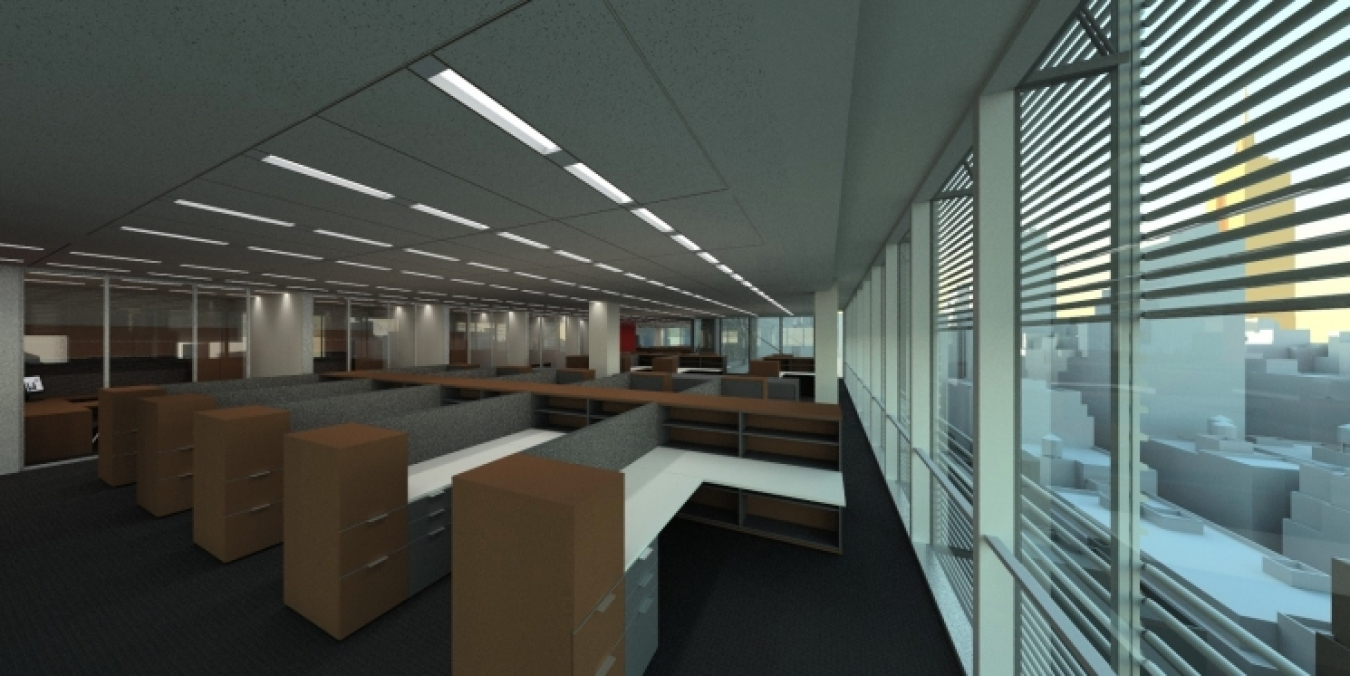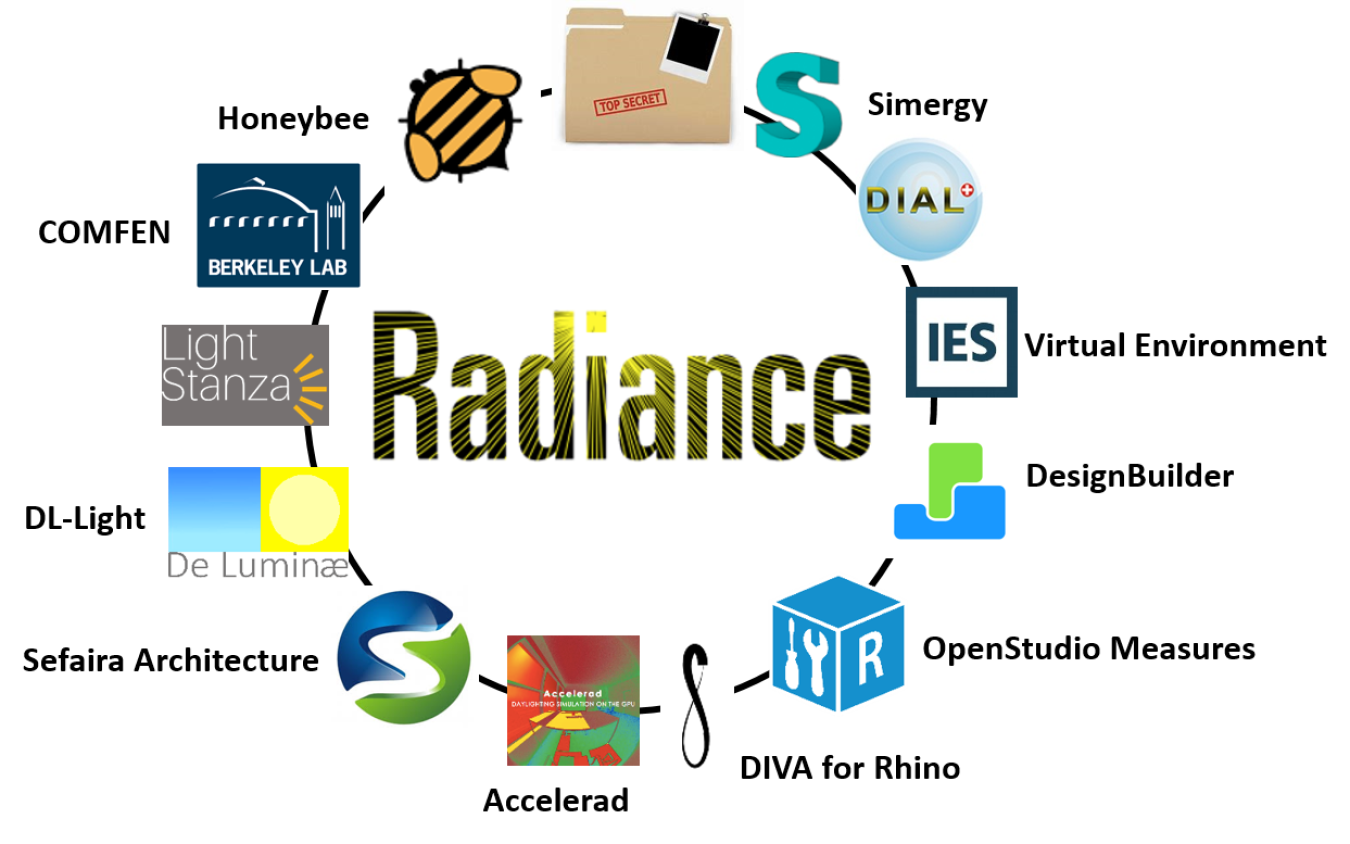Project Website: https://www.radiance-online.org/
Performers:
-- Lawrence Berkeley National Lab (LBNL) – Berkeley, CA
-- Anyhere Software – Berkeley, CA
-- National Renewable Energy Lab (NREL) – Golden, CO
Partner: Bonneville Power Administration – Portland, OR
DOE Funding: $300,000 in FY19; $3,315,000 to date (2010 - present)
Project Term: 1985 - present
Funding Opportunity: Emerging Technologies core funding
Related Projects: OpenStudio, Fenestration Tools
Project Objective
Radiance is a free and open-source lighting engine that is used extensively by engineering firms for innovative solar control, lighting, and daylighting design to improve the energy efficiency of buildings. Radiance offers complete flexibility in terms of scene geometry and materials and has been validated using detailed measurements. In recent years, new Radiance developments have resulted in the capability to conduct an annual simulation in less than two minutes and significant improvements in accuracy when modeling anisotropic, light-scattering systems and materials that are common to many shading and daylighting devices.
In FY19, Radiance is being enhanced to support fast and accurate annual simulation for complex fenestration systems (CFS) including both co-planar and non-coplanar shading systems. This work involves detailed measurement, algorithm development, and validation using test facilities.

Radiance rendering of daylighting and electric lighting for the retrofit of the New York Times offices in New York.
Project Impact
Radiance is the most widely used engine in lighting, daylighting, and solar control design and is embedded in a number of free and commercial architectural-engineering design applications including IES Virtual Environment, Design Builder, and Sefaira Architecture. A dynamic listing of applications that use Radiance is hosted by the IBPSA building energy software tools directory.
In addition to architects and engineers, Radiance is also used by fenestration, shading, daylighting, and lighting manufacturers to develop and optimize both new and existing lighting, daylighting, and solar control products, allowing designers to simulate the performance of a wide range of fenestration systems.

Contacts
DOE Technology Manager: Amir Roth
Principal Investigator: Eleanor Lee, LBNL
Publications and Presentations
- Ward, G., “Radiance Code Update 2014”, 13th Radiance Workshop, September 1-3, London, UK. https://www.radiance-online.org/community/workshops/2014-london
- McNeil, A., “BSDFs, Matrices, and Phases”, 13th Radiance Workshop, September 1-3, London, UK. https://www.radiance-online.org/community/workshops/2014-london
- McNeil, A. “BSDFViewer: A utility for interactive exploration of BSDF datasets.” September 2013. https://www.radiance-online.org/download-install/third-party-utilities/bsdf-viewer/bsdf-viewer.htm
- McNeil, A., C. J. Jonsson, D. Appelfeld, G. Ward, and E. S. Lee. “A validation of a ray-tracing tool used to generate bi-directional scattering distribution functions for complex fenestration systems.” Solar Energy 98 (2013): 404–414. https://facades.lbl.gov/sites/all/files/6541e.pdf
- Ward, G., M. Kurt, N. Bonneel. “A Practical Framework for Sharing and Rendering Real-World Bidirectional Scattering Distribution Functions.” October 2012. LBNL-5954E.
- McNeil, A. “The five-phase method for simulating complex fenestration with Radiance,” September 2013. https://www.radiance-online.org/learning/tutorials/tutorials.html
- McNeil, A. “The three-phase method for simulating complex fenestration with Radiance.” Radiance tutorial. August 2013. https://www.radiance-online.org/learning/tutorials/tutorials.html
- Zuo, W., A. McNeil, M. Wetter, and E. S. Lee. “Acceleration of the Matrix Multiplication of Radiance Three Phase Daylighting Simulations with Parallel Computing on Heterogeneous Hardware of Personal Computer.” Journal of Building Performance Simulation 7(2): 152–163, 2013.
- McNeil, A., and E. S. Lee. “A validation of the Radiance three-phase simulation method for modeling annual daylight performance of optically complex fenestration systems.” Journal of Building Performance Simulation 6(1): 24–37, 2012.
- Zuo, W., A. McNeil, M. Wetter, and E. S. Lee. Acceleration of Radiance for lighting simulation by using parallel computing with OpenCL. Proceedings of the 12th International Conference of the International Building Performance Simulation Association (Building Simulation 2011), Sydney, Australia, November 14–16, 2011. LBNL-5049E.
- Ward, G., R. Mistrick, E. S. Lee, A. McNeil, and J. Jonsson. “Simulating the daylight performance of complex fenestration systems using bidirectional scattering distribution functions within Radiance.” Leukos, Journal of the Illuminating Engineering Society of North America 7(4), 2010. https://eta.lbl.gov/publications/simulating-daylight-performance
